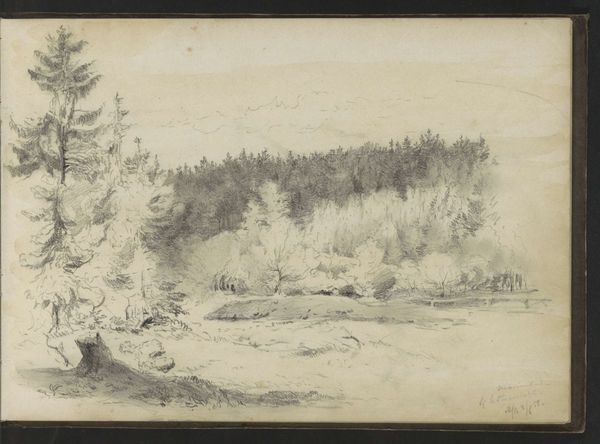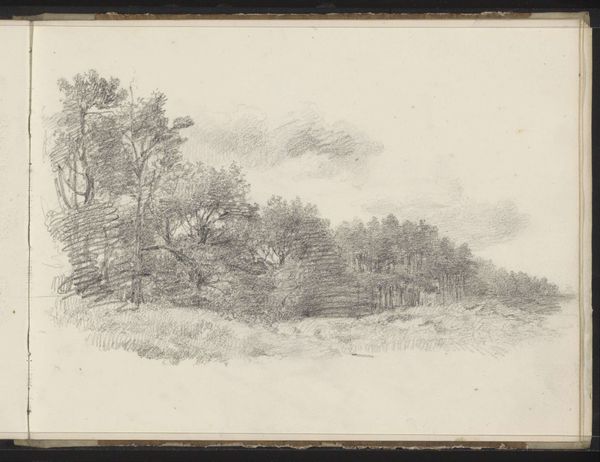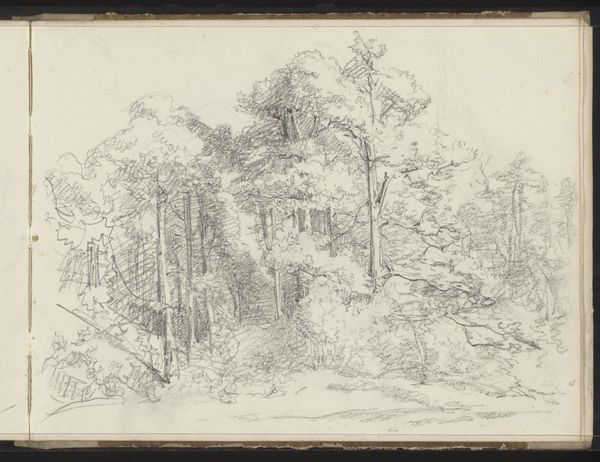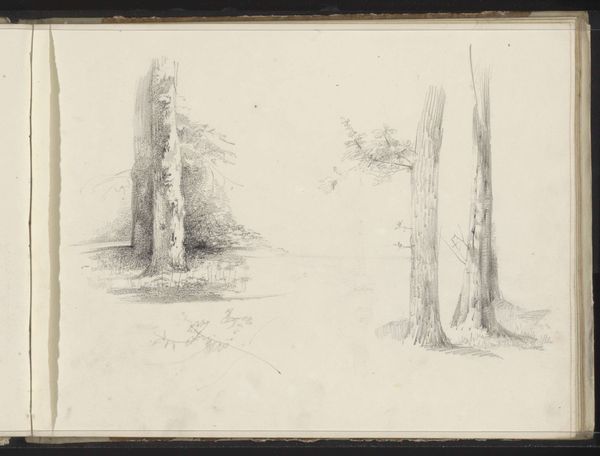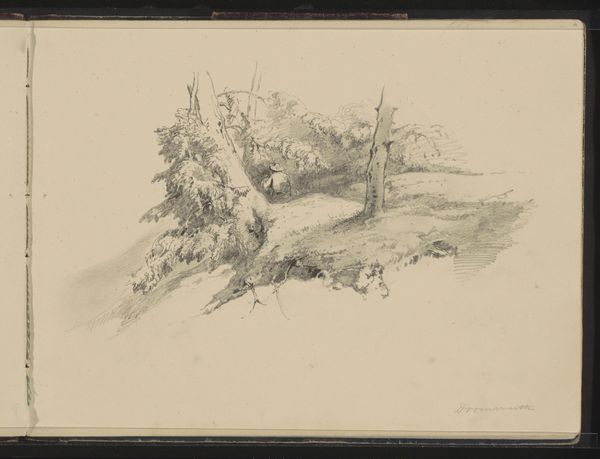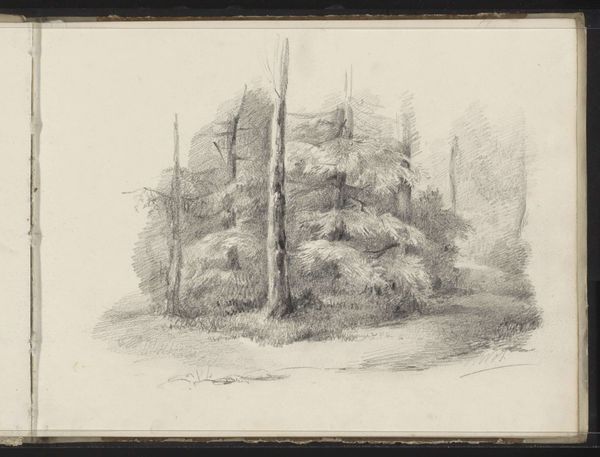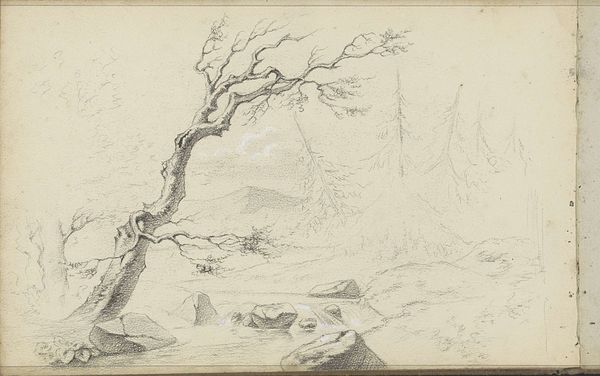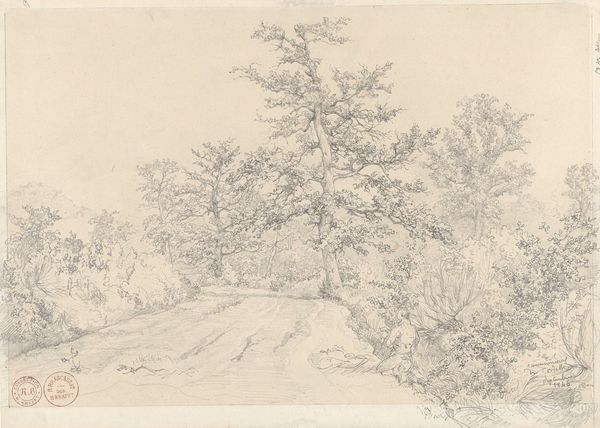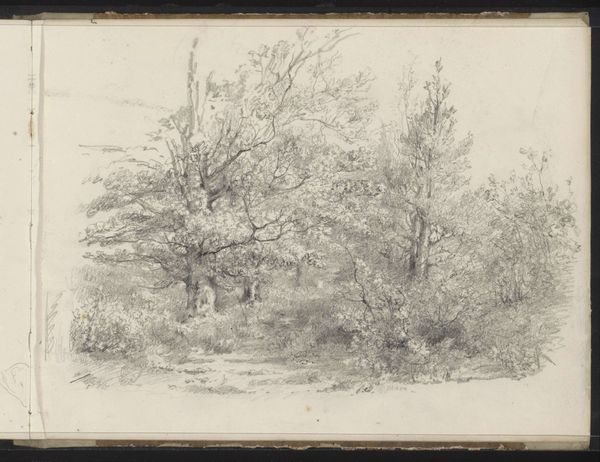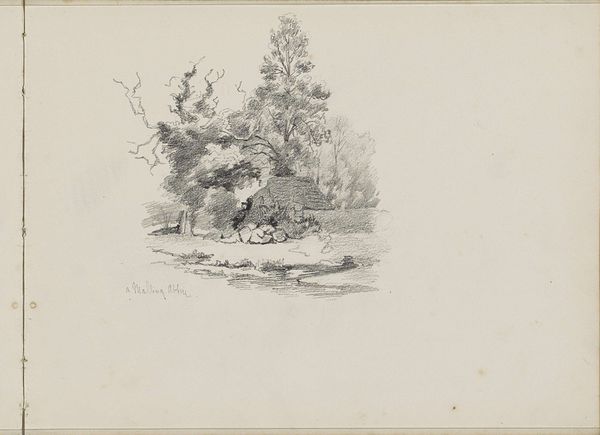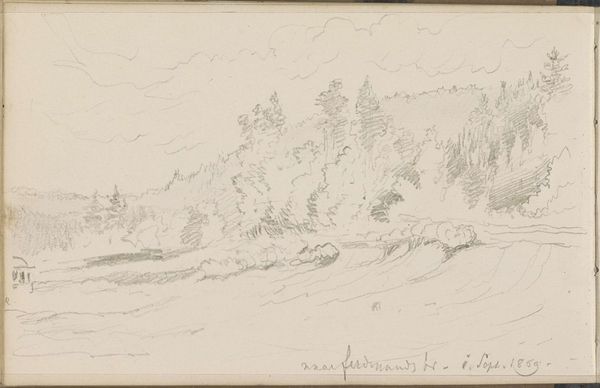
Dimensions: height 184 mm, width 282 mm
Copyright: Rijks Museum: Open Domain
Curator: Looking at this delicate pencil drawing by Willem Cornelis Rip, entitled "Naaldbomen bij Beek", or "Pine Trees by the Creek," created sometime between 1874 and 1878, I am immediately struck by its hushed, almost ethereal quality. Editor: There's an undeniably calming atmosphere. The soft, light strokes lend the scene an air of quiet contemplation. It almost feels like looking at a memory of a forest rather than the forest itself. I wonder how that atmosphere relates to ideas around Romanticism and representations of nature at that time? Curator: Rip's adherence to Romantic ideals of nature is really clear when considering this delicate, seemingly untouched forest; it reflects the prevailing reverence for the natural world so prominent at the time. But also how these images contributed to national identity. This specific kind of scene plays into the narratives surrounding Dutch cultural heritage during that period. These idyllic images also obscure potential inequalities within representations of the Netherlands, wouldn't you agree? Editor: Absolutely. The choice to depict this secluded, pristine scene excludes human presence, perhaps subtly reinforcing a specific, elite vision of the national landscape—one where ownership and access may not have been universally shared. By the late 19th century, artists were already contesting these picturesque traditions. Curator: The almost photographic realism enabled by pencils gives immediacy. This closeness gives this sense of intimacy and direct experience. Editor: Indeed. Considering the time, the material speaks of both privilege and artistic commitment. The accessibility and affordability of pencil drawings allowed a wider segment of the artistic population to practice landscape art, even though these works would likely still find an audience within the elite. Curator: And despite the subtleties, one can feel its connection with the Northern Renaissance style too. In Rip’s artwork there is an acute observation of natural forms with such precision, just like they favored. Editor: Looking at it now, I realize how much I appreciate these landscapes being presented through a progressive critical eye. Curator: Examining how images can also participate in conversations around nationalism or inclusivity, shifts its meanings into the future.
Comments
No comments
Be the first to comment and join the conversation on the ultimate creative platform.
